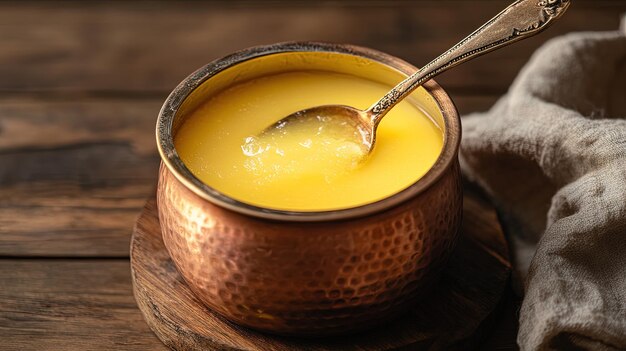Ask Ayurvedic doctor a question and get a consultation online on the problem of your concern in a free or paid mode. More than 2,000 experienced doctors work and wait for your questions on our site and help users to solve their health problems every day.
Shop Now in Our Store
Amritprash Ghrita: An Ayurvedic Elixir for Modern Wellness

Introduction
Imagine a single formulation that combines the potency of ancient Ayurvedic wisdom with today’s scientific rigor—this is where amritprash ghrita steps into the spotlight. Revered in traditional Indian medicine, amritprash ghrita is often described as an immune-supporting, rejuvenating ghee-based remedy. Over the centuries, it has found mention in classical Ayurvedic texts like the “Charaka Samhita” and “Sushruta Samhita.” Today, modern research is beginning to explore its potential benefits for various health applications. In this article, we will delve into the key components, purported benefits, and evolving scientific perspective on amritprash ghrita. We’ll also discuss how it is prepared, ways to integrate it into your daily routine, and what the medical community is saying regarding its efficacy and safety. Whether you’re a healthcare professional, a wellness enthusiast, or simply curious about Ayurvedic formulations, you’ll walk away with a balanced, evidence-based understanding of amritprash ghrita.
Table of Contents
- What Is Amritprash Ghrita?
- Historical Roots in Ayurveda
- Key Ingredients and Their Properties
- Mechanisms of Action: How Amritprash Ghrita Works
- Scientific Evidence and Current Research
- Health Benefits and Potential Uses
- Preparation: Traditional vs. Modern Methods
- Usage Guidelines and Recommended Dosage
- Safety, Side Effects, and Precautions
- Expert Insights and Clinical Guidelines
- FAQs on Amritprash Ghrita
- Conclusion and Call to Action
1. What Is Amritprash Ghrita?
Amritprash ghrita is a ghee-based, herbal formulation traditionally used in Ayurvedic medicine for its reported immunomodulatory and rejuvenating qualities. The term “ghrita” in Sanskrit refers to clarified butter, or ghee, which is used extensively in Ayurvedic preparations due to its capacity to carry herbal ingredients deep into the body’s tissues. Amritprash ghrita is typically made by infusing medicinal herbs and spices into ghee, resulting in a potent concoction often likened to a “multi-herbal jam” or a “therapeutic butter.”
Key Characteristics
- Ghee as a base: Enhances absorption and bioavailability of herbs.
- Multi-herbal synergy: Contains a variety of traditional Ayurvedic herbs.
- Renowned for Rasayana properties: Rasayana in Ayurveda refers to rejuvenative therapies aimed at promoting longevity and vitality.
2. Historical Roots in Ayurveda
Ancient Textual References
Ayurveda, a 5,000-year-old system of medicine, categorizes amritprash ghrita under rasayana chikitsa (rejuvenation therapies). Classical texts like the “Charaka Samhita” document preparations similar to amritprash ghrita, highlighting its role in:
- Boosting the immune system
- Improving digestion and gut health
- Promoting longevity and vitality
- Supporting mental clarity and emotional balance
Evolution Over Time
Historically, preparation methods could vary by region and lineage. Over centuries, Ayurvedic practitioners refined the ingredient list based on local herb availability and shifting healthcare needs. Today, standardized recipes exist to ensure consistent quality and efficacy.
3. Key Ingredients and Their Properties
While formulations can differ slightly, common components often include:
- Ghee (Clarified Butter)
- Acts as a lipid medium that increases the bioavailability of other ingredients.
- Known for its nourishing properties in Ayurveda.
- Amalaki (Emblica officinalis or Indian Gooseberry)
- A rich source of vitamin C, antioxidants, and tannins.
- Traditionally used for improving digestion and boosting immunity.
- Guduchi (Tinospora cordifolia)
- Often called “Amrita” in Sanskrit, meaning “nectar of immortality.”
- Studied for its immunomodulatory and anti-inflammatory effects.
- Ashwagandha (Withania somnifera)
- An adaptogenic herb known for reducing stress and promoting overall vitality.
- Supported by research for its potential to balance cortisol levels.
- Licorice (Glycyrrhiza glabra)
- Provides soothing and demulcent effects, often used for respiratory health.
- Contains glycyrrhizin, which may have anti-inflammatory properties.
- Honey (Optional in Some Formulations)
- Not always included, but can be added for sweetness and additional therapeutic benefits.
Each herb contributes distinct phytoconstituents that work in synergy to create the holistic effects attributed to amritprash ghrita.
4. Mechanisms of Action: How Amritprash Ghrita Works
Bioavailability Through Lipid Medium
One central concept in Ayurveda is the use of ghrita (ghee) to “carry” water-soluble and fat-soluble active compounds into the body’s tissues. Modern science aligns with this view, observing that certain lipid-based formulations can enhance the absorption of bioactive molecules.
Immunomodulatory & Adaptogenic Effects
- Herbal synergy: Ingredients like amalaki and guduchi offer antioxidants and immune-boosting phytochemicals.
- Stress Response Regulation: Herbs like ashwagandha are adaptogens, meaning they help the body better cope with stress and restore balance.
Gut Health & Nutrient Assimilation
Some ingredients, particularly those high in dietary fiber and natural enzymes, may improve gastrointestinal function. A balanced gut microbiome is increasingly recognized as pivotal to overall health, affecting everything from immunity to neurological well-being.
5. Scientific Evidence and Current Research
Ongoing Studies
Clinical trials investigating the rasayana (rejuvenative) properties of formulations similar to amritprash ghrita have gained traction in recent decades. For instance, a 2019 study published in the Journal of Ayurveda and Integrative Medicinenoted significant improvements in subjective well-being markers among participants taking a ghee-based, poly-herbal remedy.
Meta-Analyses and Systematic Reviews
While direct meta-analyses on amritprash ghrita remain sparse, broader systematic reviews of Ayurvedic herbal concoctions show promising results for:
- Boosting immune response
- Reducing inflammation markers
- Improving antioxidant status
However, researchers emphasize the need for larger, well-controlled clinical trials to solidify these findings.
Expert Opinions
Leading Ayurvedic practitioners and some integrative medicine experts endorse amritprash ghrita for adjunctive care in conditions that involve chronic inflammation, fatigue, or weakened immunity. Yet, conventional medical consensus is more reserved, often citing a need for standardized preparations and rigorous scientific validation.
6. Health Benefits and Potential Uses
Below are some of the most commonly reported benefits of amritprash ghrita:
- Immune System Support
- Regular intake may help fortify the body’s natural defense mechanisms.
- Respiratory Health
- Certain herbs in the blend are believed to maintain clear respiratory pathways.
- Digestive Aid
- Ghee combined with herbs like amalaki may support a healthy digestive tract.
- Anti-inflammatory Potential
- Some bioactive compounds found in the herbs may help reduce inflammation markers in the body.
- Enhanced Energy and Vitality
- Rejuvenative (rasayana) properties are aimed at combating fatigue and age-related declines in physical and mental performance.
7. Preparation: Traditional vs. Modern Methods
Traditional Preparation
- Soaking & Boiling of Herbs: Herbs are often soaked overnight, then simmered in water until their essence is extracted.
- Addition of Ghee: The decoction is strained, and ghee is then added. The mixture is cooked on low heat until the water content reduces substantially.
- Infusion & Cool Down: Additional heat-sensitive herbs may be added after partial cooling, ensuring their active compounds remain intact.
Modern Adaptations
- Standardized Extracts: Many manufacturers use standardized herbal extracts for consistency in potency.
- Quality Control Measures: Modern labs test for contaminants like heavy metals, microbial load, and pesticides.
8. Usage Guidelines and Recommended Dosage
General Dosage
- Adults: Typically 1–2 teaspoons of amritprash ghrita once or twice a day, often with warm water or milk.
- Children: Usually half the adult dose, but it’s essential to consult a pediatrician or Ayurvedic specialist.
Disclaimer: Dosages can vary based on individual constitution (prakriti), health condition, and the formulation’s strength. Always consult a healthcare professional for personalized guidance.
Best Time to Consume
Amritprash ghrita is generally recommended on an empty stomach in the morning or at bedtime, making it easier for the body to absorb the nutrients.
9. Safety, Side Effects, and Precautions
Amritprash ghrita is generally well-tolerated when consumed in moderation. However:
- Allergic Reactions: Individuals with dairy allergies or sensitivities to any herbal ingredient should proceed with caution.
- Caloric Density: Since it’s ghee-based, excessive consumption can lead to unwanted weight gain or exacerbate certain metabolic conditions.
- Medication Interactions: Some herbs may interact with pharmaceuticals like blood thinners or anti-diabetic medications.
Medical Disclaimer: This article is for informational purposes only and should not replace professional medical advice. Consult your healthcare provider before adding amritprash ghrita to your regimen.
10. Expert Insights and Clinical Guidelines
From Traditional Practitioners
Ayurvedic physicians often integrate amritprash ghrita into a broader treatment protocol, which might include dietary adjustments, yoga, and other herbal formulas. They emphasize the concept of individual constitution (prakriti) to tailor dosage and frequency.
From Modern Healthcare Providers
Conventional medical practitioners may recommend amritprash ghrita as a complementary therapy—particularly for immune support—while stressing the importance of evidence-based medicine and clinical research for conclusive recommendations.
Guidelines for Healthcare Professionals
- Assessment: Evaluate a patient’s dietary habits, health status, and medication use.
- Monitoring: Watch for any contraindications or adverse effects.
- Combination Therapy: If prescribing alongside pharmaceutical drugs, assess potential herb-drug interactions.
11. FAQs on Amritprash Ghrita
Q1: Is amritprash ghrita safe for pregnant women?
A1: While certain herbal ingredients in amritprash ghrita are generally safe, pregnancy requires special caution. Always consult a qualified healthcare practitioner before use.
Q2: Can I make amritprash ghrita at home?
A2: Yes, but ensuring the right proportions, sourcing high-quality herbs, and following traditional cooking methods can be challenging. Beginners may find reputable commercial brands more convenient.
Q3: How long does it take to see results?
A3: The timeframe varies by individual. Some report noticeable improvements in vitality and digestion within a few weeks, while others may take a few months.
Q4: Can vegans consume amritprash ghrita?
A4: Traditional amritprash ghrita contains ghee (clarified butter), making it unsuitable for vegans. However, newer plant-based alternatives may be available, albeit with different efficacy profiles.
12. Conclusion and Call to Action
Amritprash ghrita serves as a fascinating intersection between age-old Ayurvedic wisdom and modern scientific inquiry. Whether you seek immune support, improved energy, or simply a natural way to enhance overall well-being, this ghee-based herbal elixir may be worth exploring. That said, remember the importance of evidence-based practice—consulting healthcare professionals, conducting thorough research, and using reputable products are crucial steps in ensuring a safe and beneficial experience. If you’ve found this article helpful, feel free to share it with friends, comment below with your own experiences, and subscribe to stay updated on the latest in integrative health and wellness. Your journey with amritprash ghrita or any Ayurvedic formulation can be enriched by a community of informed readers and practitioners alike.
References & Recommended Readings
- Charaka Samhita, Ancient Ayurvedic Text
- Journal of Ayurveda and Integrative Medicine (2019),
PubMed Abstract - National Institutes of Health, Dietary Supplements
NIH Office of Dietary Supplements - World Health Organization, Traditional Medicine Strategy
WHO Publications
Disclaimer: The information provided in this article is for educational and informational purposes only. It does not constitute medical advice. For personalized recommendations, always consult a qualified healthcare professional.
This article is checked by the current qualified Dr. Harsha Joy and can be considered a reliable source of information for users of the site.



